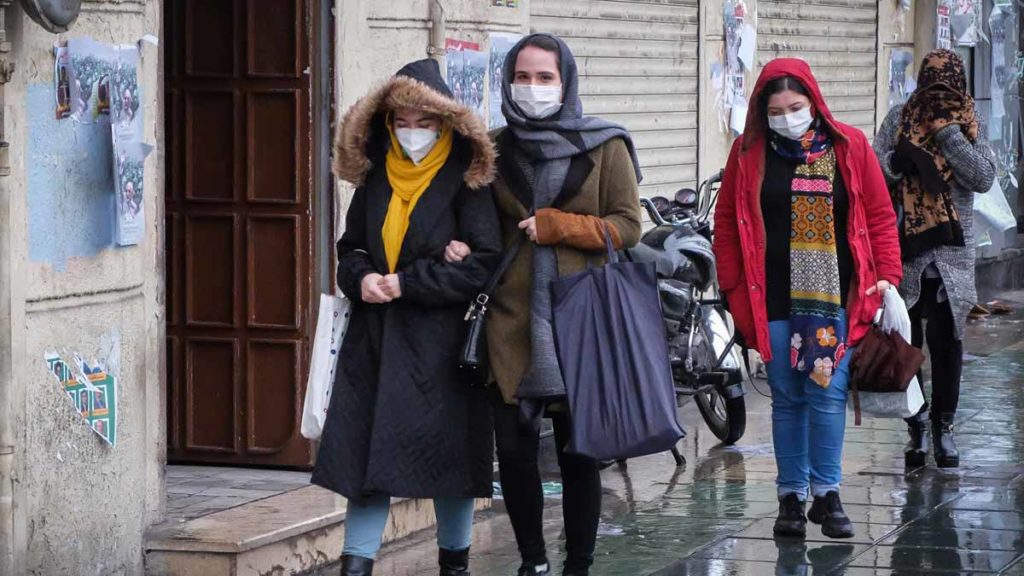“This is not a drill. This is a time for pulling out all the stops,” said World Health Organization Director-General Tedros Adhanom Ghebreyesus at a daily briefing in Geneva.
“Countries have been planning for scenarios like this for decades. Now is the time to act on those plans.”

After almost three months, China seems to be slowly winning its battle with the coronavirus outbreak. The number of cases in China, outside of Wuhan (where the outbreak originated), has been steadily dropping, and China’s severe and costly quarantine measures seem to have worked.
But there’s little reason to rest on laurels, the World Health Organization (WHO) warns.
Already, several outbreak clusters have emerged in other parts of the world. There are now 17 times more new infections outside of China than inside and the number continues to grow day after day. As of today, there are officially over 100,000 confirmed cases.
“This is not a drill. This is not the time for giving up. This is not a time for excuses. This is a time for pulling out all the stops,” Ghebreyesus urged.
In the US, Congress reached a bipartisan $8 billion deal to provide emergency funding for outbreak response. This comes as, despite having a low number of cases, there are concerns that there are hundreds of undetected cases in the US. The problem was exacerbated by the CDC’s uncharacteristically slow response, which saw the deployment of faulty detection kits, significantly delaying mass testing.
Across the nation, a survey of nurses found that only 29 percent had a plan to isolate potentially infected patients, and health workers are anxiously awaiting diagnostic kits, which will allow a better understanding of how far the disease has spread.
Americans also struggled with confusion, as information from President Trump and members of his own cabinet was also conflicting and unclear. Vice President Mike Pence vowed that “any American could be tested”, before conceding that “we don’t have enough tests today to meet what we anticipate will be the demand going forward.” Trump himself has put experts on edge with his “hunches”.
After calling the virus “a hoax” and “a hysteric”, Trump openly contradicted experts.
“Globally, about 3.4 percent of reported COVID-19 cases have died,” Tedros Adhanom Ghebreyesus, the director general of the WHO, said at a news conference in Geneva this week.
Trump doesn’t believe this:
“I think the 3.4 percent is really a false number — and this is just my hunch — but based on a lot of conversations with a lot of people that do this, because a lot of people will have this and it’s very mild, they’ll get better very rapidly.”
The administration also commented on the number of cases, saying that “within a couple of days is going to be down to close to zero. That’s a pretty good job we’ve done.”
“We’re going very substantially down, not up,” Trump added.
Contrary to what he is saying, experts are expecting a surge of cases. The administration is, presumably, trying to ease concerns about the outbreak — but public-health experts say the president needs to give consistent guidance to prevent its spread.
Trump also hinted that diseased people regularly go to work, which is something all experts warn against. Even someone with mild symptoms should not go to work, it is a crucial step in preventing the disease from spreading.
“If we have thousands or hundreds of thousands of people that get better just by sitting around and even going to work — some of them go to work, but they get better.”
The fact that the President is contradicting experts on so many counts and his administration is sending contradictory signals, is exactly what you don’t want when facing a potential crisis. For health officials, mixed messages are a communication nightmare.
Elsewhere, Iran’s leadership is also struggling with the outbreak. Members of Parliament and other high-ranking officials have become infected themselves, and the country has essentially failed to contain the virus.
In Europe (and Italy, in particular), schools and stadiums have been closed, but this poses additional challenges as many children have been left with their grandparents — which are most exposed to the dangers of the outbreak.
France, Germany, and Spain also have over 300 confirmed cases, and the situation remains volatile throughout Europe.
The disease’s impact on everyday life is mounting. It is, as the WHO warns, the time to take all measures and pull all the stops. We either stop it soon or face a truly global pandemic.


